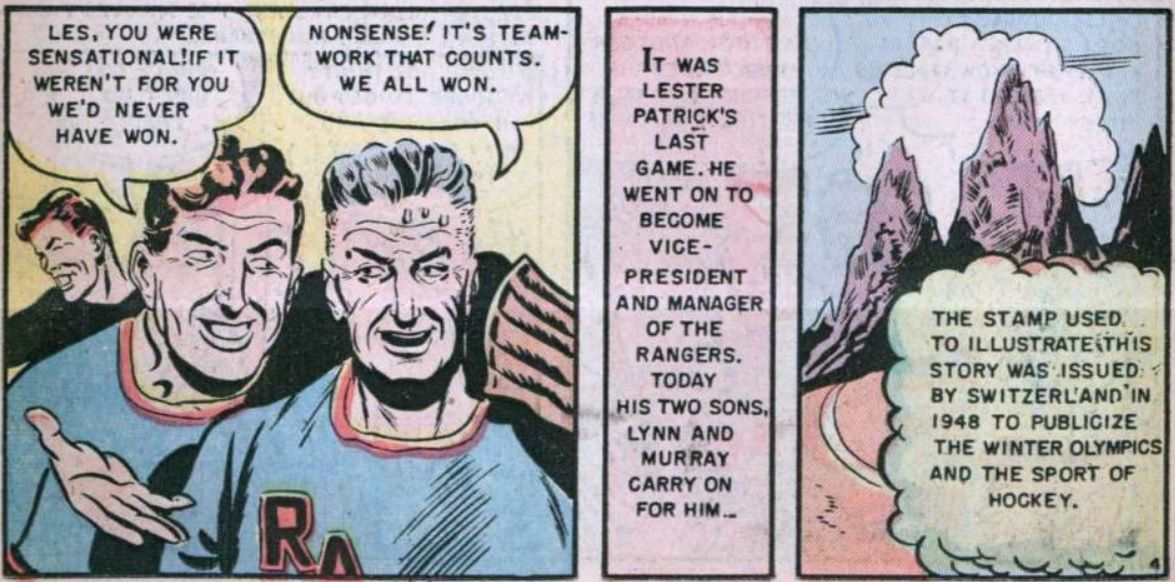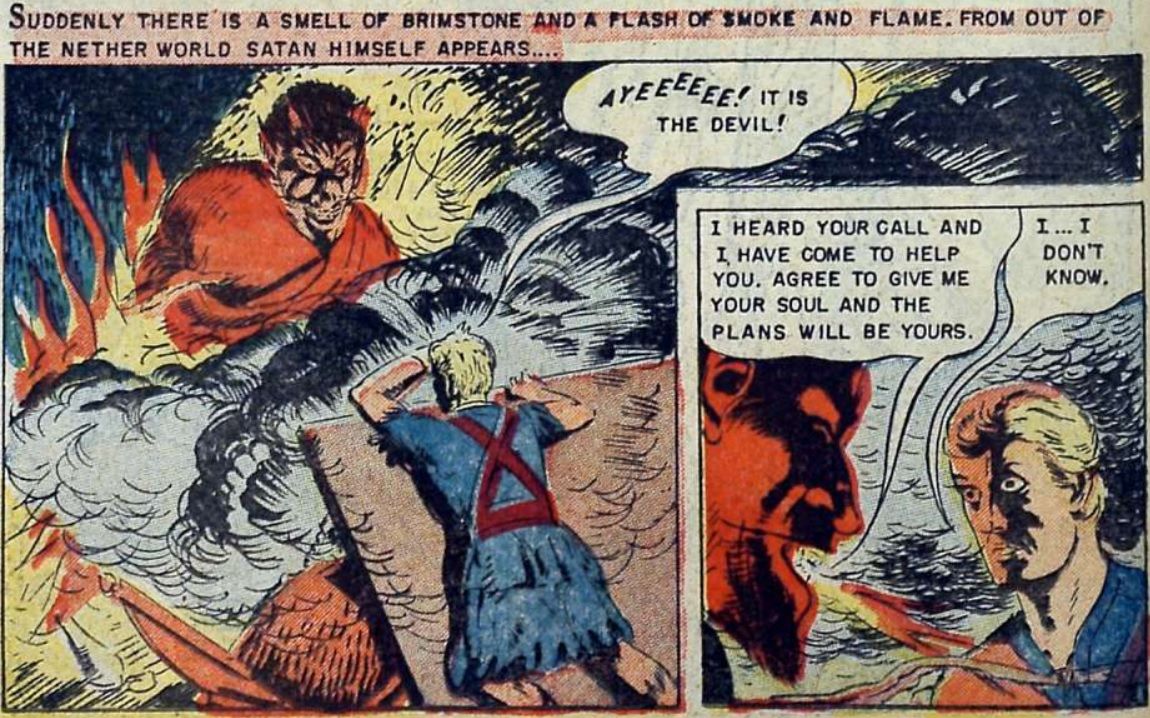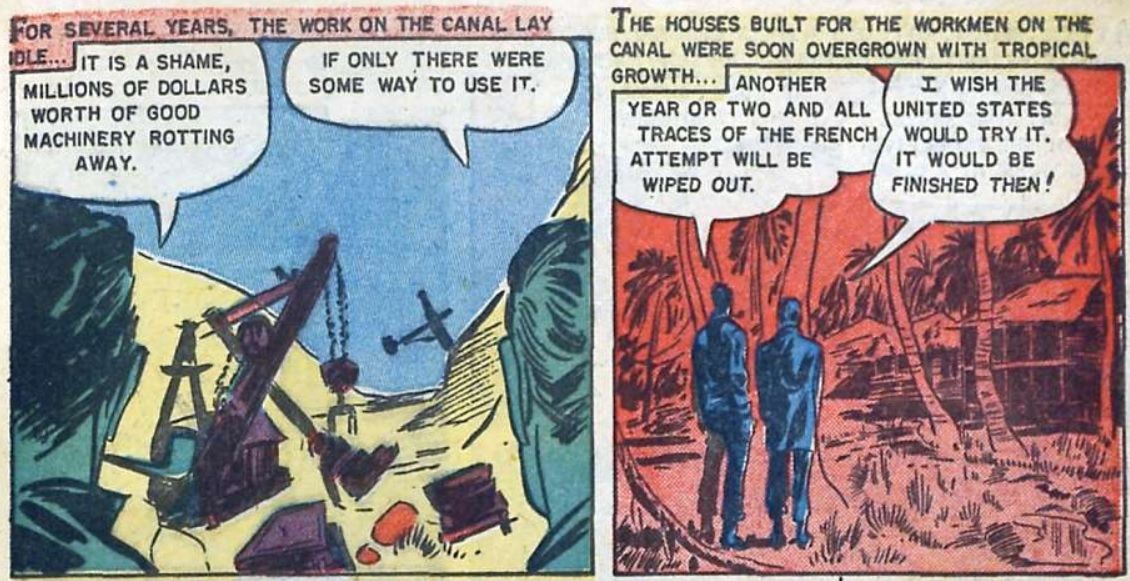Retro Comic Rewind: Stamps Comics
Some comics go down in history as masterful examples of the craft and are beloved by multiple generations. And others end up at the landfill. In this series, I’ll be looking back on some forgotten series to better understand what kind of comics our ancestral nerds were reading in the days of rotary phones and record players.
Today’s subject: Stamps Comics!
 |
I picked this one for the WTH factor alone. Stamps Comics? Seriously? Who is going to read a comic book about stamps? Let’s find out.
The Context
Stamp collecting has been around since the 1860s. In 1951, when Stamps Comics debuted, it was a very well-established hobby with millions of fans in the U.S. alone. A letter published in Issue 2 from the American Stamp Dealers’ Association states it is “by far the leading hobby in the world today, and it truly is the ‘King of Hobbies and the Hobby of Kings.'”
With that much popularity, the real question is: why wouldn’t you make a comic about stamps?
The Creators
The publisher was Youthful Magazines, which pretty clearly indicates Stamps Comics was aimed at the budding philatelist. Youthful didn’t last long (1949–1954) and didn’t publish a wide swath of titles: most of them were westerns, with a few romances and sci-fi titles thrown in.
There doesn’t seem to have been a single creative visionary behind the title. Every issue consists of multiple stories, each by a different person. Notable contributors include Doug Wildey, creator of Jonny Quest, and Henry C. “H.C.” Kiefer, who worked on just about every kind of comic for every publisher in existence in the 1940s and ’50s.
The Comic
There seems to be some confusion about this title’s…title. The covers of Issues 1 through 7 say Stamps Comics, but the interiors often refer to it as Stamp Comics. The copyright notes in the first four issues list it as Stamps Comics and then as Stamp Comics for the next three. The final issue, a jumbo-sized edition, calls itself Thrilling Adventures in Stamps — maybe a failed attempt at drawing in more readers.
The concept behind the series is simple: each issue reveals the stories behind real stamps that depict historical scenes. Most of them are U.S. stamps, but there is a respectable showing of stamps from the rest of the world. This is not always a good thing, as I’ll explain in a moment.
Throughout its eight issues, Stamps Comics covered events that would appeal to your stereotypical young male reader: war stories, sports history, the Wild West, and so on. As for how accurate these “historical” tales are…
Some of them are clearly the result of a certain amount of effort. One story even debunked the myth that Abner Doubleday invented baseball.
 |
But in other stories, they take historical legends at face value. Later in Issue 1, they claim Buffalo Bill rode for the Pony Express, a “fact” which has never been proven. Worse, their depiction of Gabon’s “leopard men” (also in Issue 1) is flat-out racist: it portrays the French colonial authorities as heroes, while the killers are simple, superstitious brutes. Several issues use racial slurs.
In still other stories — and this is the worst offense, in my opinion — they gloss over information that makes their designated heroes look bad. A story from Issue 8, “Slave Train,” inexplicably praises the Belgians for ending the Arab-controlled slave trade in the Congo. Never mind that the Belgians’ own crimes in the region were so heinous that even their fellow colonizers created the Congo Reform Association to get them the heck out of Africa.
By Issue 4, the book became noticeably sloppier, with the creators sometimes telling whatever story they wanted, regardless of the stamp. In a particularly bad case, they spotlight a Swiss stamp printed to commemorate the Olympics, yet the accompanying story is about a Canadian player’s actions during the Stanley Cup. The last panel even admits that there’s no connection beyond the fact that both involve hockey.
 |
Things go completely off the rails in Issue 8, when they claim we don’t know who designed the Cologne Cathedral because the architect made an ill-fated deal with the devil. Source, please???
 |
It’s weird that a comic that touts the many thousands of fascinating stamps in the world seems to have run out of stamp-related material so fast.
The writing across the entire series is pretty mediocre (as is much of the art), with very stiff and unconvincing dialogue. That said, I did learn some things about history — the story of the Four Chaplains, for instance — and each issue also includes advice on how readers can build their own stamp collections, so I wouldn’t say it’s a total waste. But I’m not surprised Youthful tapped out after eight issues.
The Legacy
This might be the most ’50s comic ever, and I am shocked by how much I enjoyed it (Issue 8 notwithstanding). It’s the perfect comic for anyone who has ever squinted at a stamp and said to themselves “the heck is going on there?”
In all seriousness, I was a pretty nerdy kid, and I can see myself getting into something like this, even though it’s definitely got a “White Man’s Version of History” vibe. People of color can only be bad guys, victims, or “primitive” folks with quaint little customs for us to gawk at. Women might as well not exist.
I doubt a comic like this would get a shot today, since stamp collecting is nowhere near as popular as it used to be. Even if it was, whoever published such a comic would have to take greater care when researching and choosing subjects to cover. And maybe hire some better writers. And stop “fixing” history to make white people look better when they don’t deserve it.
 |
“And they’ll only kill 25,000 people to do it!”
Want more vintage goodness? Check out previous editions of RCR: Race for the Moon.
!doctype>